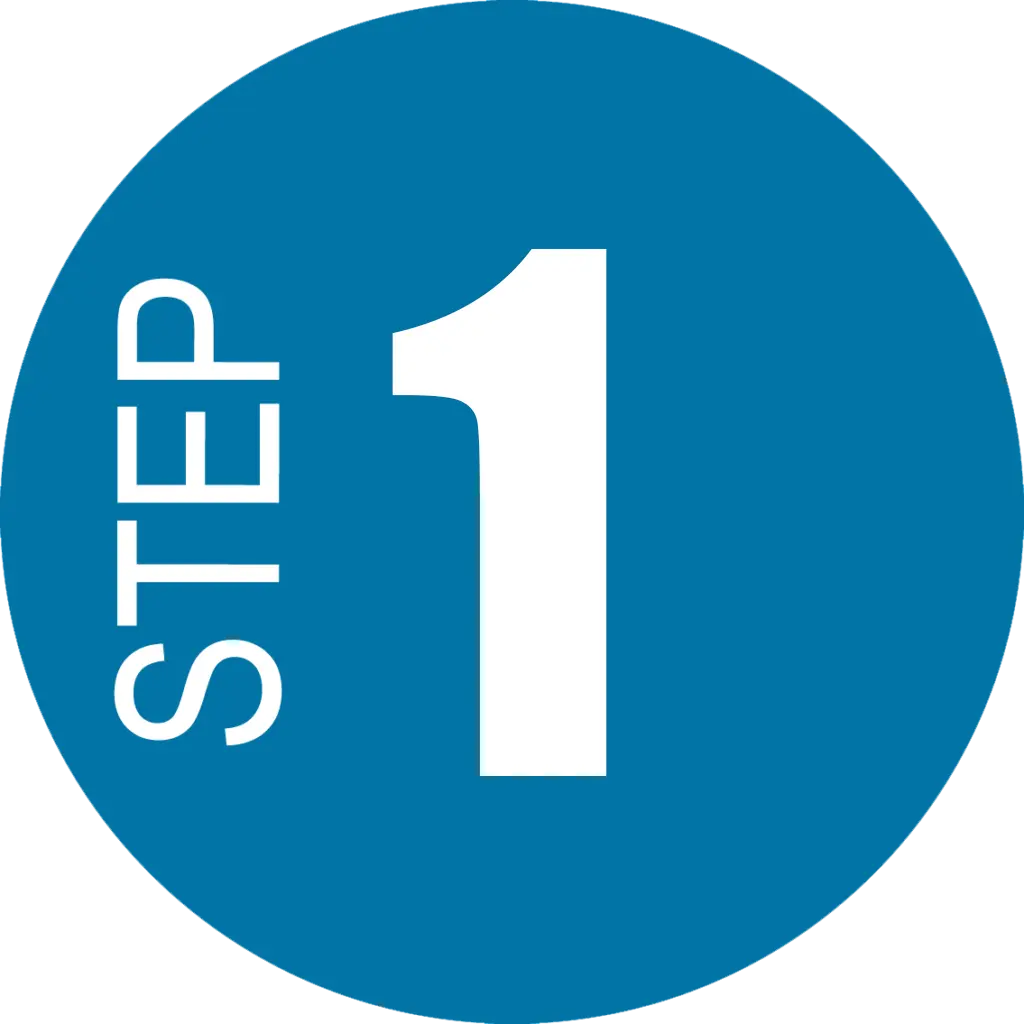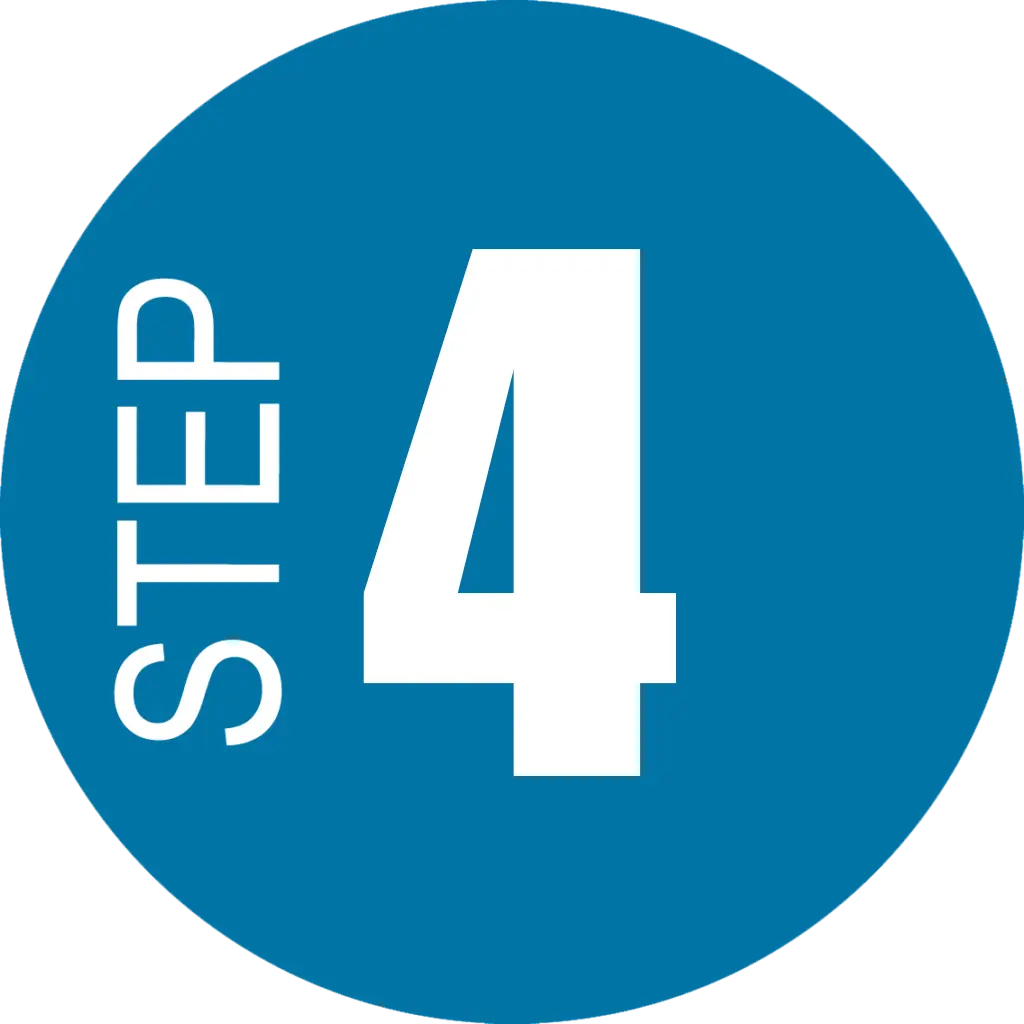How to Use IW Retirement Planner
Retirement planning is an empowering process, regardless of age. The process of planning not only fosters a sense of financial security but also a roadmap for financial well-being.
IW Retirement Planner streamlines retirement planning by bringing together two widely-used methods: straight-line forecasting, which projects future financial needs, and industry-standard Monte Carlo stress testing, which evaluates risk by simulating different market conditions. This approach combines the strengths of both techniques, offering a powerful, free tool that helps you feel confident in your plan and the decisions you make.
 Gather Your Finances and Expenses
Gather Your Finances and Expenses
 Rule of thumb to roughly estimate your retirement income needs
Rule of thumb to roughly estimate your retirement income needs
 Run a Straight-Line Forecast
Run a Straight-Line Forecast
Spending Strategies
IW Retirement Planner supports both fixed and flexible spending options. The right choice between these approaches depends on your financial circumstances, risk tolerance, and personal preference. Each strategy has its pros and cons, so it's important to select the one that aligns best with your needs and goals. Choose your Spending Strategy
Choose your Spending Strategy
IW Retirement Planner supports both fixed and flexible spending options. The right choice between these approaches depends on your financial circumstances, risk tolerance, and personal preference. Each strategy has its pros and cons, so it's important to select the one that aligns best with your needs and goals.
 Choose your Spending Strategy
Choose your Spending Strategy
- Fixed spending withdraws a set, inflation adjusted, amount each year, offering a predictable and stable income that simplifies budgeting for essentials. While this approach provides simplicity, it may not account for lifestyle changes or needs at various stages of retirement. Use one of the methods from Step 1 to estimate the income you will need to maintain a comfortable retirement. IW Retirement Planner applies a 1% annual reduction to Fixed spending expenses, based on research from The Center for Retirement Research. You can modify this reduction amount in Assumptions. Difficulty in Practice: Low
- Smile spending is an age-based approach to retirement spending, grounded in research showing that retirees often spend more in the early and late stages of retirement and less during the middle years. This method helps align spending with the evolving lifestyle and needs of a typical retiree. Use one of the methods outlined in Step 1 to estimate your initial expenses. Difficulty in Practice: Medium
- Dynamic spending provides the most flexibility by adjusting spending levels based on market performance and portfolio health. It is best suited for retirees who are willing to reduce expenses during lean market years in exchange for the ability to spend more initially and during favorable market years. This approach also helps mitigate the risk of outliving assets by adapting spending in response to changing economic conditions. Dynamic spending starts with a withdrawal of 5% of your total investment portfolio. Each subsequent year adjusts the prior year's spending for inflation and then applies 'guardrails' of 4% and 6%. If the withdrawal amount falls below 4% of the total investment portfolio, it is increased to 4%. Conversely, if the withdrawal amount exceeds 6% of the portfolio, it is capped at 6%. Difficulty in Practice: Medium
Income Buckets
Income buckets in IW Retirement Planner refer to groupings of similar income sources. These groupings help organize income sources based on tax treatment and the specific rules governing access, distribution, and eligibility, making it easier to plan and manage cash flow in retirement. There are two categories of income buckets: Investment and Non-Investment.
Income buckets in IW Retirement Planner refer to groupings of similar income sources. These groupings help organize income sources based on tax treatment and the specific rules governing access, distribution, and eligibility, making it easier to plan and manage cash flow in retirement. There are two categories of income buckets: Investment and Non-Investment.
Investment Income Buckets
- Cash & Equivalents are readily available funds, including Savings, CDs, Money Market, and Treasury Bills. You can set a maximum value for this bucket using the Invest Excess Cash field. Any amount above this limit is automatically invested in Taxable Investments at year-end.
- Taxable Investments include stocks, bonds, and mutual funds held outside retirement accounts. You can specify the bond allocation and cost basis (the purchase price of investments).
- Tax-Deferred Investments are retirement accounts that allow you to defer federal income taxes until funds are withdrawn. Common examples include 401(k), 403(b), 457(b), IRA, SEP, and SIMPLE IRA accounts. You can specify the bond allocation for this bucket.
- Tax-Free Investments are retirement accounts where taxes are paid on contributions up front, so future growth and withdrawals are generally tax-free. You can specify the bond allocation for this bucket. If your 401(k), 403(b), 457(b), IRA, or SIMPLE IRA includes a Roth component, include that amount in this bucket. IncomeWize does not currently have an HSA income bucket, but HSA funds can be included in the Tax-Free Investments bucket.
 Tax-Deferred Income Bucket
Tax-Deferred Income Bucket
Non-Investment Income Buckets
- Social Security is a federal program providing monthly retirement income based on your earnings history. Enter your estimated monthly benefit at Full Retirement Age (in today’s dollars) and the intended starting date. Refer to the FAQ for guidance on getting the most accurate FRA benefits estimate on SSA.gov. If you are already receiving benefits, select the current month and enter your before-tax monthly amount. Spousal and survivor benefits are estimated automatically when applicable.
- Pensions provide a fixed monthly retirement income, typically funded by a former employer. Enter your expected benefit starting amount and the percentage payable to a surviving spouse, if applicable. For pensions with cost-of-living adjustments (COLAs), enable automatic increases and set the COLA rate in Assumptions. Those already receiving pension income should select the current month and enter the current before-tax amount. Lump sum distributions should be entered in Other Income.
- Employment covers both part-time or full-time work. Enter your expected annual income, annual raise, and employment start/end dates. Part-time work can be included to supplement retirement income or to explore early retirement options. You can also include full-time employment to reflect continued spousal work. If there is a gap between your retirement date and your spouse's, be sure to account for any employment during that period. For example, if you plan to retire in 2040 and your spouse in 2045, make sure to include your spouse's employment from 2040 to 2045.
 Social Security Income Bucket
Social Security Income Bucket
Extra Savings
Income bucket savings automatically grow each year during your pre-retirement phase. You can also boost your savings by selecting the Extra Savings option to make additional contributions. Enter the after-tax amount you plan to set aside. Extra Expenses
In addition to your regular monthly expenses, you may have other one-time or recurring needs, such as paying off debt, taking a family vacation, or contributing to a child’s education or wedding. To include these, click the Extra Expenses button and enter any additional post-retirement expenses into your plan. Other Income
Beyond your income buckets, you can include one-time or recurring income events such as an inheritance, lump-sum pension distributions, or royalties. To add these, click the Other Income button and enter both pre- and post-retirement income amounts. The values should reflect after-tax amounts and are not adjusted for inflation.
Income bucket savings automatically grow each year during your pre-retirement phase. You can also boost your savings by selecting the Extra Savings option to make additional contributions. Enter the after-tax amount you plan to set aside. Extra Expenses
In addition to your regular monthly expenses, you may have other one-time or recurring needs, such as paying off debt, taking a family vacation, or contributing to a child’s education or wedding. To include these, click the Extra Expenses button and enter any additional post-retirement expenses into your plan. Other Income
Beyond your income buckets, you can include one-time or recurring income events such as an inheritance, lump-sum pension distributions, or royalties. To add these, click the Other Income button and enter both pre- and post-retirement income amounts. The values should reflect after-tax amounts and are not adjusted for inflation.
Healthcare and Long-Term Care Expenses
Healthcare expenses are likely to be among your most significant costs in retirement. Estimating these expenses is typically divided into two phases: pre-Medicare (before age 65) and Medicare (age 65 and beyond), as each involves different planning considerations.
Healthcare expenses are likely to be among your most significant costs in retirement. Estimating these expenses is typically divided into two phases: pre-Medicare (before age 65) and Medicare (age 65 and beyond), as each involves different planning considerations.
- Built-In Medicare Estimates
IW Retirement Planner allows you to automatically estimate premiums for Medicare Part A (Hospital Insurance), Part B (Medical Insurance), and Part D (Prescription Drug Coverage), along with any applicable Income-Related Monthly Adjustment Amount (IRMAA) surcharges, in your annual expense projections. You can include out-of-pocket costs such as deductibles, copays, and optional coverage including Medigap, dental, and vision. For help estimating these costs, refer to Chapter Medicare's The Complete Guide to Medicare Out-of-Pocket Costs. Estimating Medicare premiums and out-of-pocket expenses
Estimating Medicare premiums and out-of-pocket expenses
- Pre-Medicare Estimates
Estimated pre-Medicare expenses can also be included. For help estimating these costs, you may refer to the Kaiser Family Foundation's Health Insurance Marketplace Calculator, which accounts for subsidies, or Vanguard's Health Care Cost Estimator. - Long-Term Care Expenses
The U.S. Administration for Community Living estimates that a 65-year-old today has approximately a 70% chance of needing some form of long-term care in the future. You can add estimated long-term care costs for the final two years before longevity age. Tools like the Genworth Cost of Care Survey and Vanguard’s Health Care Cost Estimator can help forecast these expenses.
Social Security Maximizer
The Social Security Maximizer feature simplifies decision-making by determining your optimal Social Security filing strategy. It evaluates more than 700 filing strategies to identify the one that maximizes lifetime benefits within your retirement plan. Quickly find the Social Security filing strategy that maximizes lifetime benefits
This powerful tool takes into account retirement, spousal, and survivor benefits, and incorporates key benefits rules including early benefit reductions, delayed retirement credits, earnings test adjustments, RIB LIM, and restricted application and deeming rules.
Simply activate the Social Security Maximizer switch and run an analysis of your Social Security filing options. The results of the analysis can be reviewed through interactive charts, along with an estimate of the additional benefits you may be eligible for. The optimized strategy can then be applied directly to your retirement plan.
Quickly find the Social Security filing strategy that maximizes lifetime benefits
This powerful tool takes into account retirement, spousal, and survivor benefits, and incorporates key benefits rules including early benefit reductions, delayed retirement credits, earnings test adjustments, RIB LIM, and restricted application and deeming rules.
Simply activate the Social Security Maximizer switch and run an analysis of your Social Security filing options. The results of the analysis can be reviewed through interactive charts, along with an estimate of the additional benefits you may be eligible for. The optimized strategy can then be applied directly to your retirement plan.
The Social Security Maximizer feature simplifies decision-making by determining your optimal Social Security filing strategy. It evaluates more than 700 filing strategies to identify the one that maximizes lifetime benefits within your retirement plan.
 Quickly find the Social Security filing strategy that maximizes lifetime benefits
This powerful tool takes into account retirement, spousal, and survivor benefits, and incorporates key benefits rules including early benefit reductions, delayed retirement credits, earnings test adjustments, RIB LIM, and restricted application and deeming rules.
Simply activate the Social Security Maximizer switch and run an analysis of your Social Security filing options. The results of the analysis can be reviewed through interactive charts, along with an estimate of the additional benefits you may be eligible for. The optimized strategy can then be applied directly to your retirement plan.
Quickly find the Social Security filing strategy that maximizes lifetime benefits
This powerful tool takes into account retirement, spousal, and survivor benefits, and incorporates key benefits rules including early benefit reductions, delayed retirement credits, earnings test adjustments, RIB LIM, and restricted application and deeming rules.
Simply activate the Social Security Maximizer switch and run an analysis of your Social Security filing options. The results of the analysis can be reviewed through interactive charts, along with an estimate of the additional benefits you may be eligible for. The optimized strategy can then be applied directly to your retirement plan.
Tax Optimization
IW Retirement Planner provides three different ways to experiment with the most effective way to lower taxes for your situation. Explore the Withdrawal Strategy, Roth Conversion, or Tax Minimizer features to test your plan and potentially save thousands in taxes. Choose from three tax optimization strategies
Choose from three tax optimization strategies
IW Retirement Planner provides three different ways to experiment with the most effective way to lower taxes for your situation. Explore the Withdrawal Strategy, Roth Conversion, or Tax Minimizer features to test your plan and potentially save thousands in taxes.
 Choose from three tax optimization strategies
Choose from three tax optimization strategies
- Withdrawal Strategy allows you to choose which bucket to withdraw income from first, Taxable or Tax-Deferred Investments. For example, selecting Tax-Deferred Investments may be beneficial if 401(k)s and Traditional IRAs make up a large portion of your savings, as this can help reduce the tax impact of Required Minimum Distributions later in retirement.
- Roth Conversion allows you to convert Tax-Deferred Investment funds into Tax-Free Investments, up to a chosen federal income tax bracket. The ideal times to consider Roth conversions are usually during lower tax years, typically after retirement, but before starting Social Security or Required Minimum Distributions (RMDs). Converted funds are taxed as ordinary income but offer tax-free growth, help reduce the long-term tax impact of Required Minimum Distributions, and provide tax-free income later in retirement.
- Tax Minimizer attempts to lower taxes to a specified federal income tax bracket by replacing Tax-Deferred Investment withdrawals, which are taxed as ordinary income, with Tax-Free Investments, or Taxable Investments which are taxed as long-term capital gains. The goal is to replace just enough ordinary income to remain within the chosen bracket and avoid pushing income into higher tax tiers. This feature is typically most effective for those who are not at risk of large RMDs later in retirement.
Reviewing Plan Outcomes
IW Retirement Planner makes it easy to visualize your straight-line forecasting outcomes. A wide range of charts and dashboard summaries provide valuable insights into your retirement plan, helping you avoid potential pitfalls and maximize built-in tax optimization features. For example, the Federal and Capital Gains tax charts help identify when tax optimization strategies can reduce your tax liabilities, while the Medicare Surcharges chart highlights years with potential IRMAA surcharges. Additionally, the Cash Flow chart tracks how your income aligns with your expenses over time, highlighting years with potential cash flow surpluses or shortfalls, allowing for proactive adjustments. For a deeper understanding of your plan, you can explore detailed actions taken by the IW Retirement Planner modeling engine, year by year, throughout your retirement plan.
IW Retirement Planner makes it easy to visualize your straight-line forecasting outcomes. A wide range of charts and dashboard summaries provide valuable insights into your retirement plan, helping you avoid potential pitfalls and maximize built-in tax optimization features. For example, the Federal and Capital Gains tax charts help identify when tax optimization strategies can reduce your tax liabilities, while the Medicare Surcharges chart highlights years with potential IRMAA surcharges. Additionally, the Cash Flow chart tracks how your income aligns with your expenses over time, highlighting years with potential cash flow surpluses or shortfalls, allowing for proactive adjustments. For a deeper understanding of your plan, you can explore detailed actions taken by the IW Retirement Planner modeling engine, year by year, throughout your retirement plan.
Explore Straight-Line Forecasting Examples
| Single tax filer with extra savings and other income | Single Tax Filer Example |
| Married couple with employment, extra savings, extra expenses, and healthcare | Married Couple Example |
| Married couple with Roth conversions, healthcare, and long-term care | Roth Conversion Example |
| Married couple with Social Security Maximizer | Social Security Maximizer Example |
 Run an AI-Enabled Stress Test
Run an AI-Enabled Stress Test
 Monte Carlo stress test Probability of Success score
Interpreting Your Stress Test Score
Monte Carlo stress test Probability of Success score
Interpreting Your Stress Test ScoreYour financial goals and retirement lifestyle preferences play an important role in understanding your Probability of Success score. For those with modest retirement goals and flexibility in their spending, an 85% success rate can suggest a reasonably sound retirement plan. However, if you have ambitious goals or wish to maintain a higher standard of living in retirement, aiming for 90% or above provides a larger financial cushion and greater peace of mind. Additional reading: Goldilocks and the "Just Right" Probability of Retirement-Planning Success
Explore Monte Carlo Stress Testing
| Married couple with Smile spending strategy | Married Couple Example |
 Adjust Your Financial Plan
Adjust Your Financial Plan
 Track Your Progress
Track Your Progress
The Save Session feature also allows you to save and track multiple planning scenarios. This includes conservative or optimistic investment growth assumptions, as well as unexpected major events, helping you understand their impact on your retirement goals.
Useful Tips
- Click on and review all tooltips as they contain useful information
- Use PennyWize AI Assistant while building your plan to get quick answers about IW Retirement Planner features and retirement-related topics
- You can estimate your life expectancy with the Social Security Administration's Life Expectancy Calculator or Northwestern Mutual's Lifespan Calculator
- Lookup your Social Security benefits by logging into the Social Security Administration site or estimate your benefits by visiting Social Security Quick Calculator
- Review Frequently Asked Questions for additional information
- Use of a tablet-sized screen or larger is recommended